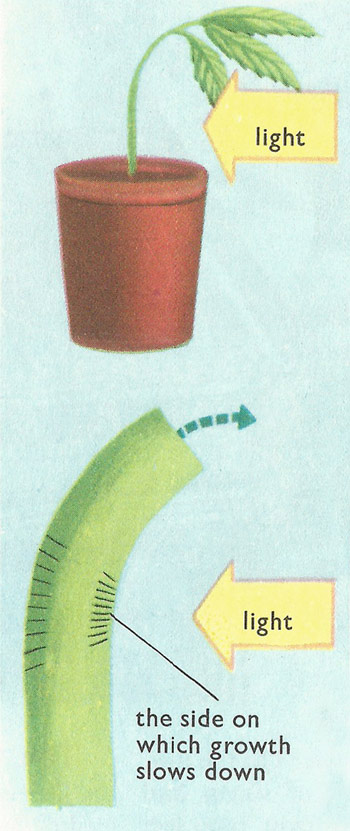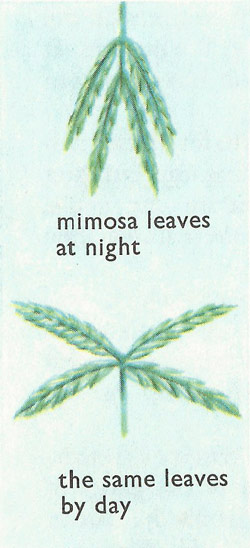phototropism

Phototropism (from the Greek phos, light, and trope, turning), also called heliotropism, is growth of a plant in response to the stimulus of light. Cell growth increases on the shaded side of the plant, resulting in curvature towards the source of light.
Chemicals called auxins (from the Latin augere, enlarge) are involved in this process. Auxins are hormones produced in the tip of the shoot, and when light shines on the shoot, auxins travels preferentially down the shaded side of the shoot, where it promotes cell elongation, causing the shoot to bend towards the light. Leaves and stems respond positively to light and roots negatively or not at all. Indoor plants lean towards windows; leaves usually grow at right-angles to light and are positioned to ensure that overlapping occurs as little as possible.
Photonasty (from the Greek phos, light, and nasto, pressed) is another form of light sensitivity. If we note the position of the leaves of lettuces, or mimosa, or acacia, or clover, during the day, and then observe these same leaves at night we shall see that they have changed their position. These plants, then, are sensitive to changes of light and react to them by movement. How does this happen?
 |
At the point where the leaves are attached to the stalk, there is formed a cylinder of cells which are full of sap. In normal conditions these cells are so distended with sap that they can hold the leaves upright. But when it is dark the amount of sap is decreased so that the cells go limp and cannot bear the weight of the leaves.


